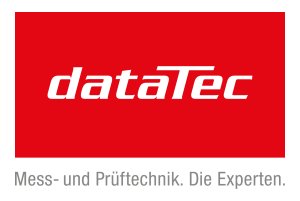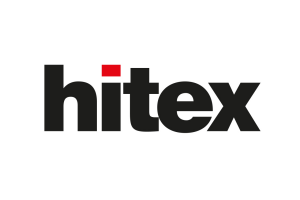NXP Strengthens Medical Technology
NXP to Protect Insulin Pumps from Hacker Attacks
Semiconductors are very important components of connected, digitalized medical technology. NXP wants to play a leading role in this growth market. Medical Manager Johannes Grüll gives an insight into the strategic direction and current topics for medtech developers such as security and AI.
Over 20 years ago, the Dutch Philips Group spun off its semiconductor business. The spun-off division, NXP Semiconductors, has its roots in the automotive and mobile phone industry; in recent years, however, the manufacturer has increasingly focussed on the medical technology market.
Quality Components for Medical Electronics
»Our partners and distributors have always realised a large number of medical projects. We have realised that many of our products are used for medical technology, especially in the IoT and edge sector,« says Johannes Güll. For the Business Development Manager Medical for the EMEA region, this is partly due to the fact that NXP is a high-quality provider and has evolved from a pure component supplier to a technology consultant and solution provider. »We work closely with our customers to develop systems that really improve patients' lives,« says Grüll. The portfolio specifically for medical technology includes low-power processors, secure communication modules for NFC, Bluetooth, WiFi or ZigBee and high-performance analogue front-end modules.
Trend: homecare and the IoMT
One trend that NXP would like to utilise for its growth strategy in the medical market is the increasing demand for homecare products and their importance for the connected healthcare system. »Many patients with chronic illnesses are now being discharged from hospital earlier, so their vital data or biomarkers need to be continuously monitored at home,« says Grüll, referring to the medtech components that are important for NXP: Analogue front ends in particular, for example in smart patches or wearables, »make it possible to develop medical devices with low power consumption and high computing power.«
The medical manager sees devices that process data at the edge or in the medical device itself and only report critical events to central systems as essential for the IoMT architecture and the further development of networked monitoring medical technology.
One example is continuous blood glucose monitoring, where intelligent wearables could be trained to pre-process in the device and only actively transmit or trigger a system response in the event of unusual values. Grüll says: »The edge approach reduces the amount of data to be transmitted and the associated costs, while at the same time increasing the security of health data.«
Integrity and Cybersecurity for Healthcare Data
The security of data transmission and storage is one of the Dutch semiconductor company's core topics in medical technology. »A hacked insulin pump is a good murder weapon,« says Johannes Grüll, adding that security has become a critical component of medical devices. NXP relies on advanced security mechanisms such as embedded cryptography libraries, dedicated security APIs and over-the-air updates to ensure the integrity and confidentiality of sensitive healthcare data. This is particularly important in the context of the new FDA cybersecurity guidelines, which place strict requirements on the security of medical devices. »NXP offers dedicated secure elements that enable hardware-based encryption and secure authentication - naturally optimised for the lowest possible power consumption.«
NXP works closely with development partners on these highly integrated medical technology approaches. One medtech example, which was presented at Medica 2023 in Düsseldorf and at Embedded World 2024, is the joint development of a heart rate sensor with Sencure. According to Grüll, the sensor, which relies on low-power connectivity and data processing from NXP, shows how specialised partnerships can create market-driven applications. "This emphasises our role as a technology consultant and application provider that goes far beyond simply supplying components," says the medical expert.
NXP Offers Longevity for Medical Components
NXP focusses on direct contact with medtech customers. "With the industry's long development cycles, certification and technological leaps, the long-term availability of components, power consumption and often the number of sensor pins are particularly worthy of discussion," says the Business Development Manager from his own experience. "In two or three years, with changing customer requirements or market conditions, more processing power or even more sensor connections may be needed - then migration, additional software development, adaptation to other product families and, finally, backwards compatibility must be guaranteed". The semiconductor manufacturer also offers a 15-year longevity programme for most of its newly launched chips in order to ensure the availability of semiconductor components for the medical development and production phases.
NXP favours direct contact with medtech customers. "With the industry's long development cycles, certification and technological leaps, the long-term availability of components, power consumption and often the number of sensor pins are particularly worthy of discussion," says the Business Development Manager from his own experience. "In two or three years, with changing customer requirements or market conditions, more processing power or even more sensor connections may be needed - then migration, additional software development, adaptation to other product families and, finally, backwards compatibility must be guaranteed". The semiconductor manufacturer also offers a 15-year longevity programme for most of its newly launched chips in order to ensure the availability of semiconductor components for the development and life cycles of medical technology OEMs and their development service providers.
The integration of artificial intelligence
Unsurprisingly for semiconductor components for connected medical devices, the integration of artificial intelligence (AI) is another focus of NXP. AI makes it possible to process large amounts of data efficiently and gain valuable insights that can contribute to personalised medicine. Johannes Grüll emphasises: »NXP supports these developments with powerful AI chips that are specially optimised for use in edge computing environments. These chips offer the necessary computing power with low energy consumption«. Among other things, the i.MX 95 is currently very successful in medical technology, Grüll emphasises the »very, very good AI and machine learning support«. »Cross-functionally, the chip also has good functional safety and security features, for example, which are very important and in demand in the medical technology and IoMT sector in particular.« (uh)
| ECG wearables: Secure Vital Data Patch |
|---|
|
At both the last Medica and Embedded World 2024, NXP and its partner Sencure presented a demo system for an ECG wearable that could be worn under the shirt or as a plaster/patch for monitoring after heart surgery or for chronic diseases. For manufacturers, it ensures a safe medical lifecycle and includes safety and security features for the secure transmission and storage of medical data as well as seamless integration with electronic health records and telemedicine platforms.
The hardware components used by NXP for the medical technology sample application are the analogue front-end ECG chip from Sencure, which records the ECG data live. The very low-power BLE microcontroller NHS52S04 is used for data streaming, and a button cell battery enables very long runtimes. The Secure Element SE051 from NXP is responsible for authorisation management and data security from the device to the cloud. |










